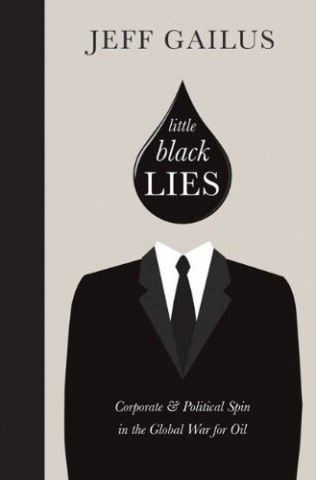In a culture awash in bullshit, it’s no easy task to identify the Little Black Lie of the Year. It’s like choosing the most beautiful butterfly or the most violent criminal. There are just so many to choose from, and who’s to say?
Still, it behooves us to try, so I solicited input from people who pay attention to such things. There were numerous contenders. In a deceit of geologic magnitude, Enbridge erased 1,000 square kilometres of islands from the Douglas Channel to make the tanker route out of Kitimat Harbour look much safer than it really is.
Then there’s the patently misleading claim by Prime Minister Stephen Harper, almost a year to the day after Canada’s outspokenly belligerent Minister of Natural Resources Joe Oliver said “we are supportive of the [Northern] Gateway [pipeline] project,” that “the government doesn’t choose particular projects.”
South of the border, the ever-dubious Fox News reported that the Keystone XL pipeline would create “a million new high-paying jobs,” when the reality is no more like 4,600 temporary constructions jobs and just 50 permanent jobs.
There were dozens of others; the competition was stiff. But the New Year brought the release of a new scientific study that sets one Little Black Lie above – or below, depending on your perspective – them all.
For years, the Alberta government and the oil industry have maintained that tar sands mines and bitumen upgraders were not polluting the land and water in northern Alberta, that development was being conducted in a “clean, responsible and sustainable” manner. Despite research published by David Schindler and his colleagues in 2009 and 2010 that found elevated levels of a variety of toxic chemicals in the snowpack and waterways around the mines, and despite numerous studies that found the monitoring program in the tar sands region to be egregiously flawed, the Alberta government’s messaging remained the same: any and all pollution found in the area was from “natural” sources.
Today, and every day in 2012, the government’s “oil sands” website reads: “Monitoring stations downstream of mine sites show industrial contribution cannot be detected against historically consistent readings of naturally occurring compounds in the Athabasca River.”
But now the cat’s out of the bag, and this Little Black Lie has been exposed once and for all.
Research funded by Environment Canada and conducted (in part) by Environment Canada scientists has confirmed what Schindler and his colleagues discovered three years ago – and it’s much worse than even they found. Some of the results were presented at a science conference late last year, but now that the study has been published in the prestigious Proceedings of the National Academy of Science, the results are publicly available. And they are damning.
In a New York Times article titled “Oil Sands Industry in Canada Tied to Higher Carcinogen Levels,” the project’s lead scientist, Professor John Smol said, “Now we have the smoking gun.”
Smol and his colleagues found that tar sands development has been contributing dangerous, carcinogenic pollutants to the watershed since large-scale oil sands production began in 1978, and they are steadily rising. Samples from one test site now show 2.5 to 23 times more polycyclic aromatic hydrocarbons (PAHs) in recent lake sediments than in layers dating back to around 1960. Smol said that wilderness lakes in the region are now as polluted as lakes in urban centres, and the most heavily contaminated lake has been exceeding Canada’s interim sediment quality guidelines for PAHs since the mid-1980s.
“Industry’s role as a decades-long contributor of PAHs to oilsands lake ecosystems is now clearly evident,” Smol and his colleagues wrote in their study. And as industrial activity continues and expands, he said, it’s only going to get worse.
Why is this Little Black Lie more pernicious than the others? Because of what it tells us about the foxes guarding the henhouse. In order to maintain the façade of no industrial pollution, the Alberta government, in cahoots with the oil industry, failed to implement a monitoring system that could detect pollution, even though the technology and expertise to do so has been available for at least twenty years. Even when Schindler and his colleagues found evidence of pollution three years ago, the Alberta government chose to deny and then ignore the results in favour of repeating the mantra, ad nauseum, that the tar sands are being developed in a “clean, responsible and sustainable manner.” All the while, approving new tar sands development as fast as humanly possible.
These studies tell us more than just what’s in the water. They illustrate just how incompetent, how downright sneaky and impervious to factual information, the ideologues in the Alberta legislature (and many corporate boardrooms) really are. They indicate that these people cannot be trusted to manage the tar sands in the responsible manner Canadians demand.
Subscribe to our newsletter
Stay up to date with DeSmog news and alerts







